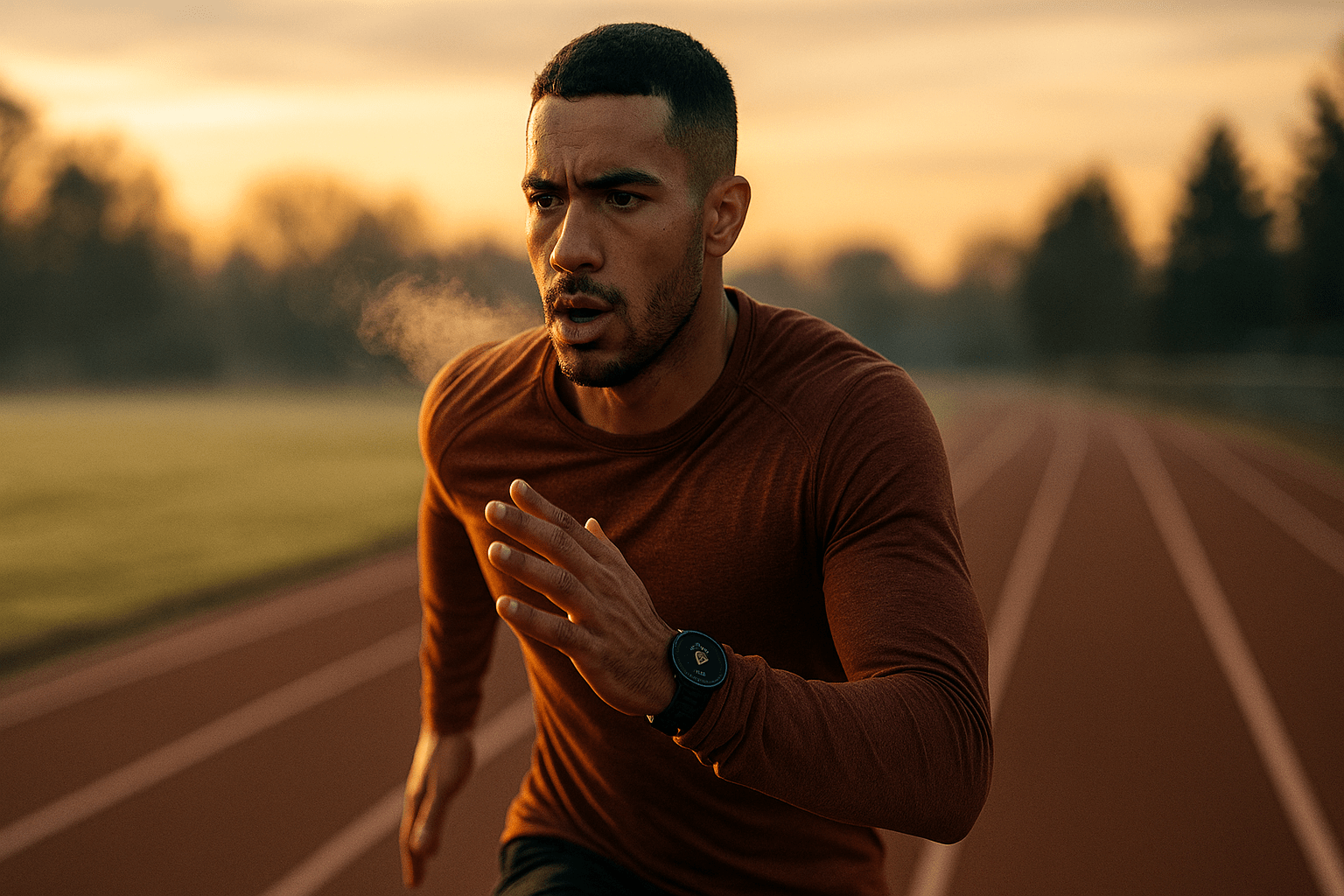Is Your Potential Hiding in Your Lungs?
There’s a moment in every long run where the question hits you: Can I keep going?
It’s not just about grit. Or willpower. Or even how fresh your legs feel.
It might actually come down to something you can’t see — the oxygen in your blood and how efficiently your body uses it. That invisible force? It’s called VO₂ max, and it could be the secret weapon your endurance training is missing.
If you’ve ever wondered why some runners seem to float at mile 10 while you’re gasping, this is the article that changes everything.
What is VO₂ Max, Really?
The Science Behind the Metric
VO₂ max stands for “maximum volume of oxygen” — specifically, the maximum amount of oxygen your body can use during intense exercise. It’s measured in milliliters of oxygen per kilogram of body weight per minute (ml/kg/min).
Think of it as your engine size. The bigger it is, the more fuel (oxygen) you can burn. And in endurance sports, that matters a lot.
Why It Matters for Endurance Athletes
The more oxygen your body can process, the more efficiently your muscles can perform — especially over long distances. A higher VO₂ max generally translates to:
- Better aerobic endurance
- Faster recovery
- Higher sustainable pace
It’s no wonder VO₂ max is often called the holy grail of endurance performance.
VO₂ Max vs. Lactate Threshold: Know the Difference
While VO₂ max measures your oxygen-processing capacity, lactate threshold tells you the point at which your body starts to fatigue due to lactic acid buildup.
Think of VO₂ max as your top gear, and lactate threshold as the speed you can hold without crashing. Both matter, but VO₂ max sets your performance ceiling.
How VO₂ Max Impacts Your Performance
The Link Between VO₂ Max and Running Efficiency
Runners with high VO₂ max don’t just breathe better — they move better. More oxygen means more energy for muscle contractions and better endurance economy.
In simple terms: You go farther, faster, with less effort.
How Elite Athletes Use Their Numbers
Elite marathoners like Eliud Kipchoge have VO₂ max scores in the high 70s to 80s. But it’s not just the number — it’s how they train to maximize their aerobic engine and maintain high percentages of VO₂ max over long distances.
Is Higher Always Better?
Not necessarily. Genetics plays a big role. Two runners might have the same VO₂ max, but the one with better running economy or mental toughness may still perform better.
So while chasing a higher VO₂ max is great, it’s not everything.
How to Measure Your VO₂ Max
Lab Tests vs. Wearables: Accuracy Compared
The gold standard is a graded exercise test in a sports science lab, where you wear a mask and run on a treadmill while your oxygen intake is measured.
But wearable tech is catching up. Watches from Garmin, Apple, and Coros use heart rate and pace data to estimate VO₂ max. These are useful for tracking trends — even if they aren’t lab-level accurate.
Signs of a Strong VO₂ Max Without Testing
You might have a solid VO₂ max if:
- You recover quickly after hard efforts
- You can maintain a strong pace for long distances
- Your breathing stays controlled under stress
Interpreting Your Score and Setting Goals
General ranges:
- 30–40 ml/kg/min: Recreational runners
- 50–60 ml/kg/min: Competitive amateurs
- 70+ ml/kg/min: Elite athletes
Improving your VO₂ max even by 5–10% can make a big difference in performance. Track it. Use it. Don’t obsess over it.
Can You Train to Improve VO₂ Max?
The Best Workouts for VO₂ Max Gains
To improve VO₂ max, you need to train at or near your max aerobic capacity. Here’s how:
- VO₂ Max Intervals: 3–6 minutes at 95–100% of your max effort, with equal rest.
- Hill Repeats: Short, intense bursts uphill force high oxygen use.
- Tempo Runs: Running just below your lactate threshold improves both speed and oxygen efficiency.
Nutrition and Recovery’s Role
You can’t build your engine if you’re running on fumes. Fuel well with carbs and proteins, and prioritize sleep — VO₂ max improvements rely on consistent, high-quality recovery.
Hydration, iron levels, and even altitude exposure also influence oxygen uptake.
How Long It Takes to See Changes
With structured training, most runners see VO₂ max improvements within 4 to 8 weeks. But plateauing is normal — beyond a point, it’s more about how well you use your VO₂ max than increasing it.
Real Runners, Real Results
VO₂ Max Before and After Structured Training
Sarah, a half-marathon runner from Austin, increased her VO₂ max from 42 to 49 ml/kg/min in 12 weeks using interval workouts and weekly tempo runs.
The result? A PR of nearly 5 minutes.
“I didn’t just feel faster — I felt like I had an extra gear I never used before,” she said.
When the Numbers Don’t Tell the Whole Story
VO₂ max isn’t everything. Some runners have moderate VO₂ max scores but exceptional race performances thanks to smart pacing, mental resilience, and technique.
Bottom line: Use the data, but don’t be defined by it.
Train Smarter, Not Just Harder
VO₂ max is more than a number — it’s a reflection of how your body processes and performs under pressure. For endurance athletes like you, understanding it can be a game-changer.
So whether you’re eyeing your next half marathon or aiming for a personal best, don’t just train harder. Train smarter. Use VO₂ max to guide your workouts, measure your progress, and sharpen your edge.
Your best run? It’s still out there. Go find it — with oxygen on your side.






Leave a Reply